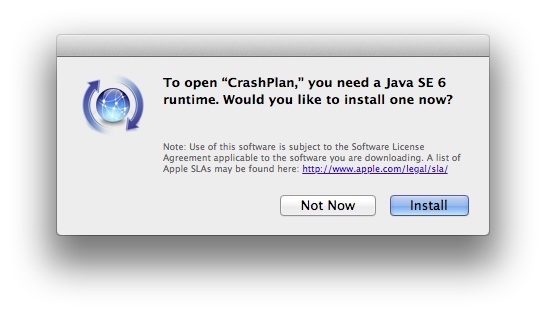Interestingly, I saw Spider Man with my son the same week that I took this photo.
Month: July 2012
The Glooko cable is now part of my daily diabetes kit
About two weeks ago I posted about my decision to stop using the iBGStar glucose meter. I love the iBGStar. It is perfect in every way. It's small, light and connects to my iPhone for data download. I ranted and raved about it to everyone I know. People in my family were starting to think I either owned significant stock in the company or were on the payroll. However, for budgetary reasons I had to stop using the meter.
Someone on a social network suggested the ACCU-CHEK nano. However, the nano doesn't isn't OS X compatible so I ruled that one out right away. Someone from Glooko commented on my blog post and I remembered that I already had the cable.
Take a look at a photo of my daily diabetes management kit:
It's neither convenient nor elegant. The LifeScan OneTouch mini connects to my iPhone via the Glooko cable. The cable is also compatible with my Abbot FreeStyle Flash but the system is much bulkier than the small sleek iBGStar. The Glooko software is functional but lacks the user interface finesse that I've come to expect from iPhone software.

Like the iBGStar software, I can download and track my blood glucose (BG) and add a note about a number of carbohydrates in my meal and my insulin dosage. I can tag each BG entry as before or after a meal. This is useful for spotting trends.

The Glooko has a database of foods. I can look up nutritional information on brand-name foods but also generic things like raspberries. That's something the iBGStar can't do (yet). I don't eat much-packaged food or chain restaurant food — who wants bland, high sodium, fatty, HFC laden food? — so the food database is not of much use to me. However, I could see why it might appeal to the other people with diabetes.

I can export the downloaded information from the Glooko app to email (CSV), eFax (really!!??), AirPrint or any app that supports the "Open in…" feature of iOS such as Dropbox, Box or iBooks (PDF). I think my favourite is going to be Dropbox. I'll have access to my information from my Mac, iPhone, iPad or any computer with a web browser.

There is an opinions tab in the app. Click that and I'm taken to Glooko's Facebook page. I guess they wanted some social media around their product but I won't be using this feature.
To use the Glooko, I purchased a cable that was compatible with my brand and model of meter. The list of meters isn't comprehensive but it does include the major brands and meter models. I have a LifeScan OneTouch Ultra mini and Abbot FreeStyle Flash so those are the meters with which I tested. I plugged one end of the cable into the data port on the meter and then plugged the other end — the one with the iPhone dock connector — into the iPhone. I had to go into Settings in the app to select the brand and model of meter I was using then back to the Home screen and tap the Sync button. I wish this step was automated. I wish the software could auto detect the meter type so I just plug in the cable and tap sync.
One the data is downloaded from the meter, I can add other information.
The setup isn't pretty and I don't like carrying around the cable but it works for now. The OneTouch strips are covered by insurance so my endocrinologist can send a prescription directly to my mail order pharmacy service which covers everything for a nominal c-o-pay. However, the Glooko can connect to the range of glucometers I already have and is inexpensive compared to buying a bunch of new meters. I always have multiple meters. I like to have a backup.
Before I decide on a long term solution I want to try the Contour USB. The Contour USB (and strips) are covered under my pharmacy benefit so my endocrinologist called in a prescription. Until I have that device and I have used it for awhile I'm sticking with the Glooko cable.
How well did my OS X 10.8 install go? Well ...
So ... I completed two installs of OS X 10.8 yesterday. One on my wife's 2009 MacBook and the other on my 2009 iMac. Both went well. The MacBook was done first starting at around 8:15 AM. The servers were slammed so it took a while for things to get started. I had a few failed connection attempts. Once the download started I started praying. Why? Well ... I was doing the install while at work and I was not authorized to use my employers network for my personal device. However, from my desk I get a strong signal from the nearby Xfinitiy Wi-Fi hotspot. Yes! That's right, I did a major OS install on a laptop over a public Wi-Fi network. I've used that hotspot for over a year. The download speed is about 12Mb/s and I've never had a dropped connection. So why not? Once the download completed - it took about 3 hours - I launched the installer and 33 minutes later I had Mountain Lion.
I rushed home after work and started the download and install on my iMac. Since my over-the-air install had gone so well I opted to install over my Wi-Fi network. I have a 802.11n Time Capsule which had never failed me. With the exception of the TiVo, Apple TV and the Blu-Ray player - I guess those are all media devices for video - all the devices in the home are wireless. The iMac download of OS X 10.8 was a lot faster - about 15 minutes. The installer took 30 minutes.
All apps on both computers seem to be Mountain Lion compatible so far. I've run into an issue with two apps on the iMac, though. Prior to Mountain Lion I used AirFoil to stream system audio from the iMac to an [AirPort Express]1 connected to a pair of powered speakers behind the living room couch. This comes in handy when I want to use streaming audio services like Spotify or Pandora. I could stream these from my iPhone but then I'd have to worry about charging the phone or music when the phone rings etc. It seems the drivers that AirFoil uses are not Mountain Lion compatible so the audio controls on the iMac are borked. I can not lower or raise the volume on the iMac. It's stuck at the level it was before the installation. I think this is fixable either with an update from AirFoil or a removal of those specific drivers.
The second issue is more of a decision point. As you know, I'm not a fan of legacy technology like Java and Flash. I've taken the position that these technologies have outlived there usefulness. C++, Objective C and other language are now portable and powerful enough for building robust mobile apps and we longer need the build-once run-anywhere "broken" promise of Java. The HTML 5 standard has/will make Flash superfluous for building responsive web sites. A few years ago I removed Flash and disabled the JVM (browser only) on my Macs. OS X 10.8 ships with neither.
Apple, Adobe and Oracle came to an agreement. Going forward Adobe and Oracle will be responsible for all development and patching of their respective technologies for the Mac platform. That good news and bad news. The good news is that I don't have to worry about the current trend of attacking the Mac through security flaws in Flash or Java. The Mac's reputation has been recently tarnished by Trojans attacking the platform through those technologies. The bad news is that, CrashPlan, my local and online backup solution, no longer works. Apparently the software requires Java and when I first launched it, I was prompted to download and install Oracle's Java. The program is Mountain Lion compatible only if I install Java. Bummer.
So ... I have a decision to maker. Either I install Java and live with the risk or ... I find another solution2. I haven't decided yet.
Did you install OS X 10.8 or are you waiting for software updates for your software first? If you did install OS X 10.8, how did it go? What new features are you excited about? Let me know in the comment section below.
- The AirPort Express is wirelessly linked to the Time Capsule as one network. ↩
- Switching cost will be high. I've got over 1TB in the service. ↩




